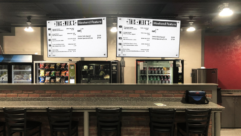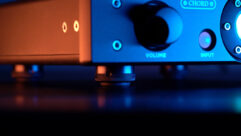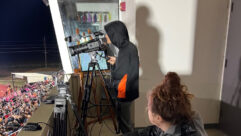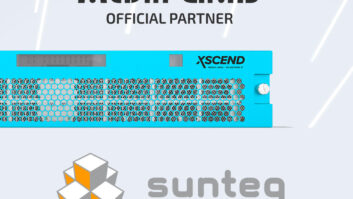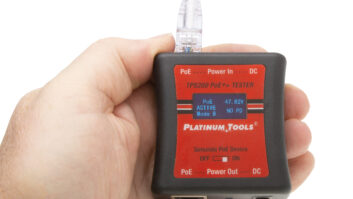
Behind The Looking Glass: What’s Inside A Plasma Monitor
What’s Inside A Plasma Monitor
The frontSputteringThe dielectric layerThe backForming the ribsApplying phosphorsA marriage of equalsFinal assemblyQuality controlNo place but up
In less than a decade, plasma display panels (PDPs) have gone from expensive display curiosities to affordable, everyday display solutions. In fact, their prices have dropped so much that it’s now possible to buy 42-inch plasma monitors for less than $2,000 and 50-inch PDPs for less than $3,000.
Newer, larger sizes have come to market, including 60-, 63-, and 65-inch panels from LG, Samsung, and Panasonic, respectively (the latter with 1920×1080 resolution), a 71-inch 1080p panel from LG, and now an 80-inch behemoth from Samsung (also with 1080p resolution). At CES 2006, these three companies all showed models in excess of 100 inches.
Despite the differences in size, all of these panels share a lot in common. They’re phosphor-based imaging systems, like CRT monitors. They have a formed, native pixel structure, and use a mix of rare gases to stimulate the red, green, and blue phosphors. They all also can trace their lineage back to the first plasma display — a one-pixel design using a pair of microscope slides, epoxy, and a pair of electrodes that was kit-bashed together at the University of Illinois in 1964.
Today, numerous manufacturing plants in Japan, Korea, Taiwan, and China are cranking out hundreds of thousands of plasma monitors and TVs every month to meet the ever-growing demand for these cool, flat-panel displays. According to Austin, TX-based research firm DisplaySearch, worldwide plasma market share grew 109 percent in 2005 on the sale of 2.7 million units to account for 3 percent of all TV sales.(LCD had 15 percent of the market, and CRT had 79 percent.) Plasma market share could have been even higher, had it not been for shortages of monitors and TVs during the holiday selling season. That fact was not lost on PDP manufacturers — some of which responded by ramping up production even more and announcing newer, larger fabrication lines (fabs).
Just how difficult is it to make plasma? Not as complicated as you might think. At SID 2004, reporters were treated to a demonstration of a homemade plasma monitor, crafted by a former engineer at Corning (you know, the glass folks).
Needless to say, all of this assembly work is robotic and takes place in some pretty impressive clean rooms. Here’s a look at the process that was being used at the Fujitsu-Hitachi Plasma (FHP) factory in Miyazaki, Japan, when I visited a few years ago.
A plasma panel is really like a big sandwich, with a layer of phosphor-lined ribs sealed between two dielectric layers lined with electrodes. It all starts with the “motherglass,” a large piece of glass with a special chemical composition that’s precision-cut for each PDP. This glass isn’t like the stuff in your windows. It’s specially tempered to be strong but thin. Early on, soda-lime glass was used for PDPs. Today, there are a few different ways to fuse the glass — one of which even uses fired ceramics.
A typical 42-inch PDP is built in two sections. The front plate is thoroughly cleaned, and a transparent conductive film is applied to its surface. This film is then patterned into individual display electrodes by chemically removing the excess film.
The next step is to coat a portion of the display electrode surface with a conductive alloy, such as copper and chromium. This particular mixture is applied using a process known as “sputtering.” All of the electrode surfaces and the supporting glass are sputtered. But another chemical process removes all but a narrow strip of the metal alloy — perched right atop the display electrodes. This opaque alloy coating has to be super-narrow because the surface of the display pixel needs to be as transparent as possible. After all, light from the phosphors must get by the electrode! This approach is similar to the thin-film transistors that are mounted atop high-temperature polysilicon LCD panels.
Now, we’ve got a big piece of glass with parallel electrodes covering most of its surface. Think of this as being one side of a large capacitor, and it’s easier to imagine. That means the next step is to apply a dielectric material to surround and insulate the electrode/glass surface.
The dielectric layer is easy to apply — screen printing does the trick. Once this layer is applied and cured, a protective layer of magnesium oxide is deposited on top of it. The result looks like half a Vienna Finger sandwich cookie.
An identically sized piece of glass is cut for the back of the PDP and is thoroughly cleaned. This plate will do most of the heavy lifting, as it will support another set of electrodes and the barrier ribs or pixels that hold and separate the phosphors.
Once again, an alloy of copper and chromium is precisely applied to the surface of the rear glass and the excess chemically removed to leave thin address electrodes — the other side of the capacitor. Address electrodes are the ones that are turned on to fire a specific pixel. If the address electrode isn’t enabled, the pixel won’t fire for that cycle. These electrodes run the length of the panel, but when the two glass halves are finally mated and sealed together, the electrodes will be at right angles to each other.
Yet another dielectric layer is applied to provide insulation between the electrodes and also maintain constant spacing from the plasma rib structure, which lies on top of it. There are several different processes used to create the ribs, such as precision sandblasting (very common) of the glass material, chemical etching of the material, and even a photosensitive paste, which is cured, and then the excess is chemically removed.
Any of these processes can be used to create conventional ribs, which look like long troughs or gutters, and an alternative structure with formed pixels that look like the surface of a waffle. Both structures are in use today, although the waffle design isn’t as common. It was originally developed by Pioneer to get more light energy out of a given phosphor formulation.
The sandblasting/etching process doesn’t leave a whole lot behind, other than the parallel rows of thin barrier ribs. The next step is to deposit the individual red, green, and blue phosphors into these channels — another process that’s easily handled with screen printing.
Once the phosphors have cured, it’s time to join the two panels together. Before doing so, a lip must be formed completely around the edges of the rear panel so it can make an airtight seal with the front glass assembly. A tiny nipple is also formed in one corner of the rear glass assembly for the gas priming process.
Once all is ready, the two pieces of glass are precisely aligned with a gap of about 1 millimeter all the way around. The outer edge of this sandwich has a high-pressure seal from the outside world. Next, all air is evacuated completely from the newborn panel, to be replaced with a mixture of xenon and neon gas.
In the early days of plasma, the mixture was tilted in favor of neon as it produced higher light intensity during the charge-discharge-sustain cycle. But neon is tough on phosphors. There were also real issues with image burn-in and premature phosphor burnout. The adoption of a deep pixel structure was supposed to maximize light output, reduce power consumption, and hopefully extend phosphor life.
With continued research into more efficient phosphors, the gas mixture has been changed to include more xenon and less neon (in some cases, helium is also added in small quantities). This mixture is supposed to extend plasma pixel life considerably. This xenon-neon gas mixture changes into a plasma state at sufficiently high-enough voltages, just like a neon advertising sign.
Once the pure gas mixture has filled the PDP, the nipple is sealed off, and the panel is ready to leave the clean room and vacuum chamber for final assembly. The finished panel requires a few more things to “become” a monitor, such as flat-wire connectors to the plasma address and data electrodes, anti-glare glass, electromagnetic shielding, a surrounding frame or bezel, a chassis, and the associated electronics to power and drive it. The wiremold connectors from electrodes are simply plugged into matching receptacles during the final installation process.
Panels are also pulled from the line and tested with full white, red, green, and blue images to verify there aren’t any defective display and address electrodes. The uniformity of the panel is also checked here, as is its full-on brightness and full-on, full-off contrast reading. (That’s the number you see in data sheets, by the way.)
Assuming the panel passes all quality control checks, it’s released for final assembly and packaging. This might be in the manufacturer’s own housing, or in a private-label housing with custom color, finish, and front logo. Even the connector panels can be different for the same PDP module as it’s manufactured for OEM partners.
The plasma fab process is so simple you have to wonder if any improvements can be made to it. In fact, plasma technology is still taking some big jumps with each year, starting with the non-saturable phosphor compounds now coming into use. These compounds respond well to the xenon/neon gas mixture, and produce quite a bit of light for the energy consumed (on average, about 400 watts for a fully functional 50-inch plasma TV in recent tests).
Early large-panel designs required two separate sets of address electrodes to be able to write video data fast enough to the screen. (This was a problem with large LCD monitors as well.) In the past year, a couple of manufacturers have shown single-line addressing for all rows of pixels, which cuts down on the processors required to drive the panel, not the number of electrodes per pixel (R, G, B), after all these years.
Different filter materials have been developed for the anti-glare glass that will pass more light energy and improve color rendering while preventing unwanted reflections (something all phosphor-based displays have to deal with). At CES 2006, a demonstration of one of these advanced filters produced some amazingly bright and saturated colors when compared to current-model plasma TVs.
Pixel density is also changing in plasma manufacturing. It was common wisdom that 768 rows were about all a manufacturer could pack in to any PDP modules smaller than 70 inches, using the standard pixel pitches of just less than 1 millimeter.
That too has changed; at CES 2006, the big PDP manufacturers showed 50-, 55-, and 60-inch plasma TV prototypes with 1920×1080 resolution. At SID 2006, a paper was presented that discussed a 42-inch 1920×1080 plasma — a screen size/resolution combination that was previously considered to be exclusively LCD “territory.”
With larger fabs coming on-line in the next few years, PDP manufacturers are also filling in intermediate screen sizes to compete with LCD and microdisplay rear-projection technology. For example, Panasonic recently announced a 58-inch screen size to sit between its 50-inch and 65-inch products.
It’s possible, but not likely, that we may see even larger plasma panels, thanks to the plasma tube process developed by Fujitsu. In this design, the electrodes, gas mixture, and phosphors are encased in long, flexible tubes, just like a neon sign or fluorescent lamp. The idea behind the tube is to cut down the weight of the front and rear glass as much as possible, and perhaps even make it flexible enough to bend for curved displays. In fact, the costs of manufacturing plasma display panels decrease as screen sizes increase, which could make plasma a competitive alternative to coarse resolution displays such as light-emitting diodes (LEDs).
The biggest hurdle that faces PDPs is energy efficiency. It takes a lot of energy (typically more than 200 V) to charge up the pixels and ignite the gas mixture. Multiply that by 1,049,000 pixels (the standard count in a 50-inch-wide XGA plasma), and you can see why plasma monitors and TVs get so warm. The tube design may hold the key to lower power consumption, if a gas mixture can be formulated with lower conduction thresholds.
Another issue — and one that faces all flat-panel display technologies — is the tightening regulation of heavy, toxic metals in manufactured goods coming into the European Union. Arsenic, lead, beryllium, and mercury are all on the “no-no” list, which has manufacturers scrambling to find acceptable replacements. Even so, the future looks pretty strong for plasma. Forecasts show the worldwide plasma market rising to 25 million units or more by the end of this decade as CRT production continues to decline. No doubt we’ll see many more tweaks in the manufacturing process to meet “green” energy goals and safety requirements — not to mention larger sizes at lower prices.
Pete Putman is a contributing editor for Pro AV and president of ROAM Consulting, Doylestown, PA. Especially well known for the product testing/development services he provides manufacturers of projectors, monitors, integrated TVs, and display interfaces, he has also authored hundreds of technical articles, reviews, and columns for industry trade and consumer magazines over the last two decades. You can reach him at [email protected].




